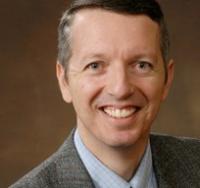
Armando Duarte is a Professor and Excellence Faculty Scholar at the Department of Civil and Environmental Engineering at the University of Illinois at Urbana-Champaign (UIUC). He is affiliated with the UIUC Computational Science and Engineering Program, a Fellow of the United States Associate for Computational Mechanics, and a Fellow of National Center for Supercomputing Applications (NCSA). Armando Duarte holds a Ph.D. in Engineering Mechanics from The University of Texas at Austin. His research focuses on computational mechanics and Generalized Finite Element Methods with focus on computational fracture mechanics, multi-scale and multi-physics problems such as hydraulic fracture propagation and failure of structural connections. Dr. Duarte’s group has a history of collaborative research with industrial (ExxonMobil, GE) and national laboratory (AFRL, FAA, Sandia) partners.
Interactions among multiple spatial scales are pervasive in many engineering applications. Structural failure is often caused by the onset of localized damage like cracks or shear bands that are orders of magnitude smaller than the structural dimensions. In this talk, we present a Generalized Finite Element Method (GFEM) based on the solution of interdependent macro/global and fine/local scale problems. The local problems focus on the resolution of fine-scale features of the solution in the vicinity of regions with singularities or localized nonlinearities, while the global problem addresses the macro-scale behavior of the structure. Fine-scale solutions are accurately computed in parallel using the h-version of the GFEM and embedded into the global solution space using the partition of unity method. Thus, the proposed method does not rely on a-priori knowledge about the solution of the problem. This GFEM enables accurate modeling of problems involving nonlinear, multi-scale phenomena on macro-scale meshes that are orders of magnitude coarser than those required by the FEM. Numerical examples demonstrate applications to the simulation of propagating cohesive fractures in concrete beams, and to the analysis of structural connections (spot welds) in built-up panels for the next-generation hypersonic aircrafts currently under investigation at U.S. Air Force Research Laboratories and Lockheed Martin Company. Extensions of the method to three-dimensional simulations of multi-stage hydraulic fracturing of gas and oil reservoirs are also discussed.
Lindsay Walton
lwalton@ucsd.edu
